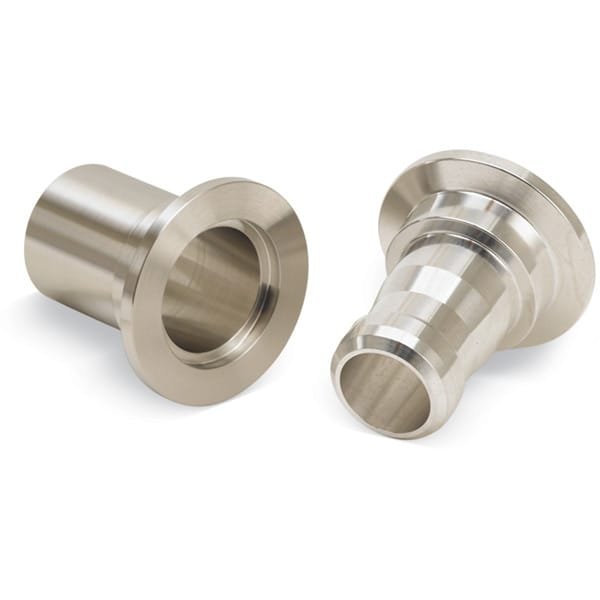KF (QF) to Hose Tubulations: Versatile Vacuum Hose Integration for KF Flange Systems
The KF (QF) to Hose Tubulations by TFM are precision-engineered adapters that enable seamless connections between KF vacuum flanges and flexible rubber or plastic vacuum hoses. Designed for use in roughing lines, foreline plumbing, or temporary setups, these adapters simplify hose-based vacuum routing in research, industrial, or laboratory environments.
Available in both 304 stainless steel and aluminum, these hose tubulation adapters feature a standard KF flange on one end and a smooth hose-compatible tube extension on the other. This makes them ideal for secure, leak-resistant connections to hoses of various inner diameters, allowing users to integrate soft tubing into otherwise rigid KF-based systems.
Key Features of KF (QF) to Hose Tubulations:
KF Flange Compatibility
Designed to mate with KF16, KF25, KF40, or KF50 quick-flange vacuum components, using standard centering rings and clamps for easy, tool-free installation.Smooth Tubulation End
The opposite end is a hose-adaptable stub, perfect for inserting into flexible vacuum tubing (typically secured with hose clamps), allowing simple adaptation of vacuum sources, pumps, or exhaust lines.Material Options
304 Stainless Steel: Ideal for corrosive environments, high-vacuum integrity, and long service life.
Aluminum 6061-T6: Lightweight and cost-effective for general-purpose vacuum lines.
Leak-Resistant Interface
When paired with a suitable hose and clamp, the smooth tubulation ensures an airtight fit and secure vacuum performance.Compact and Reusable
Tubulations are reusable and well-suited for systems requiring frequent reconfiguration or temporary hose-based connections.
Applications:
Connecting KF flanged components to flexible vacuum hoses in foreline or exhaust paths
Temporary or mobile vacuum rigs requiring hose integration
Low-to-medium vacuum system plumbing for research or test environments
Simplified connection of gas ballast lines or venting systems
Clean room setups where corrosion resistance and flexibility are essential
TFM also offers KF to hose nozzles, KF to baseplate ports, and KF adapters for Welch pump inlets, providing full coverage for your vacuum line customization needs.
In conclusion, KF (QF) to Hose Tubulations from TFM offer a reliable, adaptable, and material-flexible option for integrating hoses into KF-based vacuum systems. Whether you’re building out a complex foreline or assembling a quick-test rig, these adapters simplify hose connectivity without compromising vacuum performance.





Reviews
There are no reviews yet.